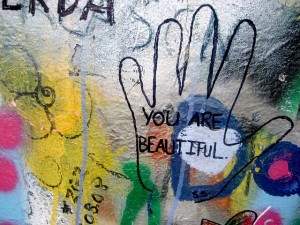Two years ago, Amy Chua author of” Battle Hymn of Tiger mother” stirred up a heated debate about the Eastern parenting vs the Western parenting
For immigrant parents this raises an important question that requires conscious reflection and deliberation: how do we parent? Some argue that we should not judge the different approaches, only the outcome counts. Yet as responsible parents, we do want to assess the potential outcomes of each approach. Parenting is not only an art , it is also a science.
‘Spirited Child’ is a label that Mary Kurcinka gives to the ‘difficult child’. Naming is the way we view our child, when we name them as difficult, they become a problem; while when we name them as ‘Spirited Child’, we see them as gifted. This is a strength based approach.
In her book, ‘Raising your Spirited Child’ Mary Kurchina illustrates the nine types of temperaments of a ‘spirited child’. Through vivid examples and a refreshingly positive viewpoint, Mary Kurcinka offers parents strategies for handling their spirited child. The description of spirited child reminded me of Amy Chua’s portrayal of her second daughter Lulu in ‘Battle Hymn of the Tiger Mother’. Lulu exhibited many of the characteristics of a spirited child. For instance, she displays high levels of persistency, intensity, and perceptiveness… I wonder, if Amy Chua had understood her daughter’s temperaments from this viewpoint, would she have treated her second daughter differently, with less harshness.
As Mary said “identifying your child’s temperamental traits is like taking an X ray. It helps you to understand what is going on inside of your child so you can understand how he is reacting to the world around him and why. Once you understand the reasons behind his response, you can learn to work with them.”
Amy Chua, author of “Battle Hymn of the Tiger Mom”, is a mother of two daughters and a professor from Yale University. Although Amy Chua was born and raised in America, she insisted that she would apply a traditional Chinese parenting approach, a style which is rigid and strict. She demanded excellence from her daughters. For instance; they could not attend a sleepover, have a play date, watch TV or play computer games, be in a school play or get any grade less than an A.
Many people have criticized Ms Chua’s dictatorship style of parenting. But Amy Chua says that was the way her parents raised her and her three sisters. And all of them felt grateful for what their parents had given them. Her diligent and rigid approach only backfired with her second daughter Lulu. At the age of 13 Lulu’ rebelled against her mother’s demands. This took the form of shouting at her mother in public “I hate my life! I hate you!” It was at this point that Ms Chua says she decided to retreat.
On the one hand we do admire Amy Chua’s courageous candor with disclosing her shadow side of parenting, and it is through her disclosure of ‘ dirty laundry” , that we are able to know and learn about her approach and reflect on our approach. On the other hand, from Amy Chua’s experience, we also learn that there is no universal way of parenting. One approach may work out well in one generation or with one child; it may not work out well for another child. As much as we want our children to be adaptable to the new environment, we, as parents need to be open minded and adjust our approach accordingly.
During the last thirty years, many valuable parenting books are available for today’s parents, such as John Gottman’s ‘ Raising An Emotionally Intelligent Child,’ Dr Thomas Gordon, P.E.T (Parents Effective Training), John Gray’s Children Are From Heaven, Michael Popkin’s Active Parenting Today, and Mary Kurcinka ‘s Spirited Child, and many more. We have gained more knowledge about the various behaviors, cognitive functioning, or their emotional needs of our children. Updated knowledge has helped us to better understand our children’s needs at each stage of development, and their temperaments. As today’s parents, no matter where we are from and where we are stay, we are able to be better equipped and do not have to rigidly follow what our parents have handed down.
Rachel Remen has a wonderful saying about gardening, and it can also apply to parenting: ‘No master gardener every made a rose. When its needs are met a rose bush will make roses. Gardeners collaborate and provide conditions which favor this outcome. And as anyone who has ever pruned a rosebush knows, life flows through every rosebush in a slightly different way.’
Hailing Huang , MA
www.kwfellowtraveler.com
*The views expressed by our authors are personal opinions and do not necessarily reflect the views of the CCPA
